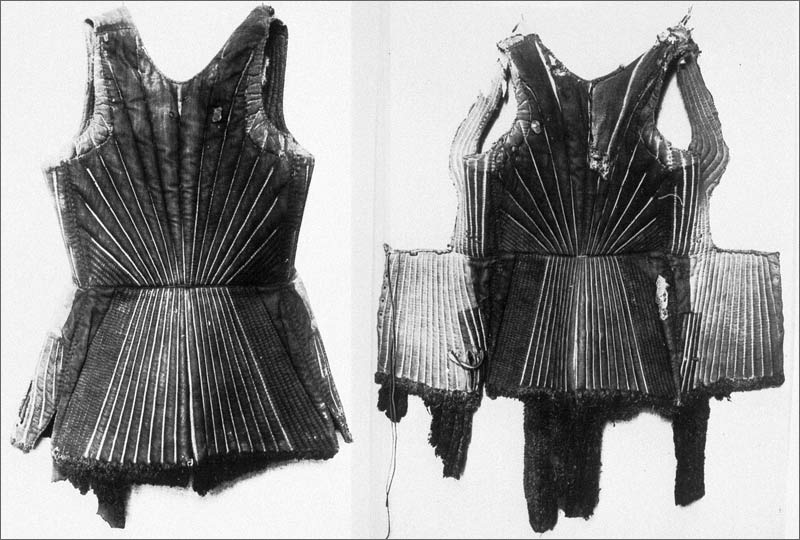Posts: 30 Location: Hanau, Germany
Wed 12 Sep, 2007 9:05 am
Hello.
The padded garments are not in the St Annen Museum, but in the Holstentor. The museum owns two of them, a rather well preserved piece 8which is stowed away) and one the chest portion of which is missing (which is on display, the wrong way round, the intact back portion facing the visitors.
An old legend has it that King
Gustav Vasa of Sweden some time in the early 16rth century, when he fled to Lübeck, wore these garments, but that´s a Victorian legend. There is another coat that looks exactly the same in Stendal.
Stylistically I´d date them around 1440, into the "Kastenbrust era" if I may say so. The proportions set into relation, the coats have a quite highly set waist, come down to about mid- thigh, and the dagged flaps come down to about knee level. compatre to the Heilsspiegelaltar by Konrad Witz or Van Eyck´s paintings
Closer examination revealed that the Stendal coat as well as the intact one from Lübeck have rust stains- on the front only. They are manufactured from quite coarse material, but aping the style of the higher classes.
The furry dags on the lower hem are made from linen, and the fur ist produced by rows of frayed out linen sewn to w foundation strip. The backsides are painted black, probably in pitch or some oil based colour, maybe as a means of protection from the weather. Contemporary art sometimes shows the same "colour pattern" with a blackened back and unpanted off- white or dyed front.
The coats most likely were part of the armour for the local militia that wore them with a breastplate sans backplate, and a helmet, not the knightly foundation for higher- ranking shiny armour.
Regards
Ivo
